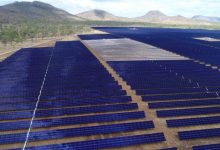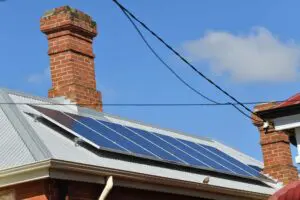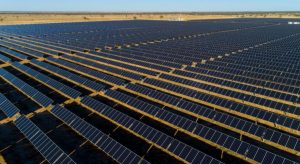The administrators of failed contracting giant RCR Tomlinson have detailed how the multi-billion company collapsed last year, and the investigations reflect badly both on the company’s own choices, and to some of the system-wide issues in the Australian solar industry.
McGrath Nicol has warned creditors that they may get as little as 30 cents in the dollar for monies owed, and say that the company may have traded while insolvent, but it is the problems in the solar contracting business which caused the collapse that are of most interest here.
The main problem was “Project Gretel”, the name given by RCR to its contract to build the Hayman and Daydream solar farms in Queensland. These were to cost around $300 million, giving a $28.5 million margin to the contractor.
But a suite of problems blew out the costs of Project Gretel by $57 million, turning an expected $28.5 million gain into a $28.5 million loss, and at least $21 million of cost over-runs at three other solar projects, coupled with delays at nearly all of its 12 solar projects, meant the company ran out of cash and had to call in the administrators.
McGrath Nicol note how quickly RCR sought to build up its solar business, grabbing $1.5 billion of projects in the midst of the investment boom, “without any noticeable change in the group’s governance or risk structures to manage these risks.”
The cost over-runs at Project Gretel, and then the delays and over-runs at other projects, had a cascading effect on its cash flow position.
“Solar milestone payments were delayed and pipeline projects failed to eventuate,” it notes in its report to creditors.
And the business was run on such fine margins that it was unable to cope, and a cash outflow of more than $200 million over seven months was too much for its lenders, who coughed up $100 million in additional funds once, but not a second time.
“This decrease in receipts led to RCR stretching its creditors and requesting additional funding from its lenders, a request which was ultimately declined.” Cost overruns then emerged at other projects, and news of the problems meant it could not win new contracts.
This graph above illustrates just how many of RCR’s 15 projects were experiencing delays. The blue indicates the original contract duration and the striped line the forecast delays. Most of the delays intersect over the thin black line that indicates the date the administrators were appointed.
The delays would be familiar to almost everyone in the Australian large-scale solar industry, and the wind sector too. And so would the reasons identified by McGrath Nicol.
Some were specific to Project Gretel, such as adverse ground conditions that caused delays in the time needed to install pilings for solar panels, and problems with the timing of delivery and quality of parts from third-party suppliers.
There were requests for changes to solar farm design by the project owners, and disputes over contract terms.
Some appeared to be a mix of RCR’s own problems and the amount of risk it took on board in managing costs, and achieving milestones and in managing delays.
Others point to systemic issues around the change in connection requirements and delays at the network and market operator level.
“A change in testing requirements requested by Australian Energy Market Operator (AEMO) and Network Service Provider (NSP), which impacted the time and cost incurred by RCR in progressing through the grid testing phase,” the administrators note.
These include:
– requests for additional testing outside of agreed requirements;
– delays in ability to perform the tests required as a result of delays in the finalisation of connection agreements with AEMO;
– interpretation of milestone requirements impacting expected milestone dates (i.e. additional testing requests or payments withheld for minor documentation not impacting energisation or generation which was not factored into timeframe); and
– differing requirements in relation to the connection stage (e.g. qualified electricians were required in certain states, whereas semi-skilled labourers were sufficient in others).
It is now well documented that these issues are widespread, in part caused by changes to connection requirements, less latitude from networks and AEMO, a shortage of qualified personnel on both sides of the fence, and some developers simply not understanding the complexities of connection.
McGrath Nicol said the cost-overruns at Project Gretel had been identified in April last year, but were at first thought to be limited to $11.5 million. It wasn’t until July that the scale of the overruns (five times bigger) was realised.
By then, significant cost overruns were occurring on a number of other solar farms, and by October the board was told of $11 million overruns at one solar project, $5 million at another, and another $5 million at a third project.
This next graph highlighted why RCR might have been so attracted to the solar business. In the early stages of most solar contracts, upfront payments were received by RCR, which assisted funding the necessary working capital for each project.
Further payments were received as RCR achieved contractual milestones. But in order to recover the milestone-based payments, RCR had to meet certain performance obligations.
Outgoings to employees, creditors and other necessary costs to deliver on the solar projects had to be met regardless of whether a milestone was achieved.
Even though cash flows were due to come in during 2019, it was too late, because the fine margins of the business left it with no cash, and the administrators were called in and the solar business was shut down.
This occurred less than two years after RCR secured its first major EPC contract for the Darling Downs solar farm in Queensland owned by Origin Energy and embarked on its remarkable expansion that made solar its biggest business unit by revenue in a matter of months.
But that won’t be the end of the story for the solar industry.
The administrators say there could be significant cost recoveries from the outstanding solar projects, in the tens of millions of dollars, from debtors and disputes and counter-claims with the project owners and the contractors who have since taken over the projects.
“Claims relating to the solar projects are complex and potentially of considerable value,” the administrators note. “The Administrators have put all solar farm principals on notice regarding their duty to mitigate costs and account for costs incurred.”











